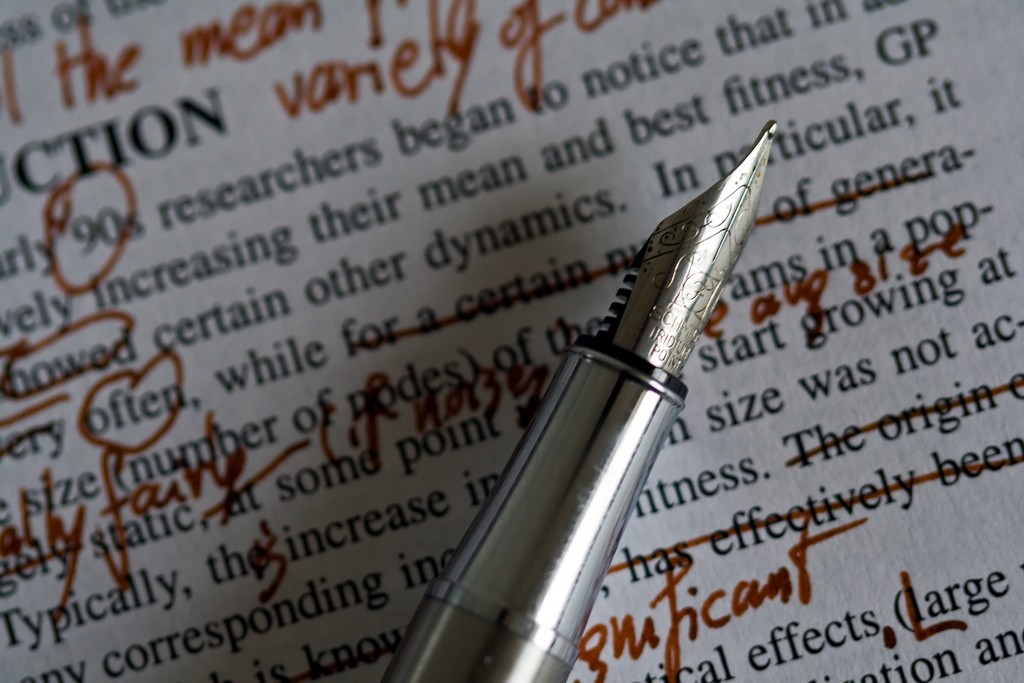One of the easiest ways to lose your audience is by presenting slides that resemble a wall of text. As numerous experts have pointed out, it’s hard for most people to read slides and listen to a speaker at the same time. A slide filled with text encourages your audience to ignore what you’re saying, since they can read faster than you can talk. If you want to avoid this situation, you’ll need to cut back on what’s on your slides. If you want to keep everyone’s attention, you have to carefully edit your presentation content.
In a previous blog post, we discussed the 4 fundamental qualities of presentation content. To be effective, your content needs to meet the following criteria:
1.) Has a clear and specific message
2.) Streamlined and simplified
3.) Supported by facts and data
4.) Compelling and memorable
As you can see, at least 2 of these emphasize the need for precise editing. How can you make your message clear if it’s buried under so many slides? How can you keep your points simple if there’s too much bullet points on screen? It’s time to take a step back and make sure your presentation content is straightforward and memorable.
Our top 5 tips for editing presentation content:

Tip #1: Review the purpose of your presentation
With your initial ideas drafted out, the next thing you have to do is to figure out how much of it you can use. That means you’ll need to have a clear understand of the purpose and message of your presentation. Why were you asked to speak in the first place? What is the main takeaway that you want people to remember? Who are you expecting to address? Anything that deviates from your premise should be edited out of your presentation content.
Tip #2: Aim to follow a simple structure
The structure of your presentation should be easy to follow. Regardless of what it’s about, your presentation should resemble how stories are often told. It should have a beginning, middle, and an end. Start your presentation with an introduction, where you prepare the audience with context for your main discussion. The body of your presentation should include an in-depth but well-structured discussion of your key arguments. Then end with a conclusion that allows the audience to review and remember your core message.
Tip #3: Group similar points together
After editing your initial list, review what you have left and try to condense those points even further. Identify which of your ideas are related to or connect with each other. From there, group those points together and create main clusters that will make up the body of your presentation. Observe a few of Apple’s famous keynote presentations to see how complex discussions can be simplified into three main points.
Tip #4: Limit your examples
Examples are the best way to bring vague concepts into real life, but having too much might also derail your discussion. Another way to edit presentation content is by making sure you limit yourself to giving only 1 example for a certain point. Whether it’s a story, a metaphor, or an analogy, keep your examples quick and easy to understand. Avoid complicating an already tedious concept by loading it with a long explanation.
Tip #5: Keep it conversational
The language you use—or the way you write something—also plays a role in how effective your presentation content is. Remember, a presentation is not an essay. There are differences between the way we write and speak, so get rid of jargon and complex explanations. In an essay, you have plenty of space to explore details. At the same time, readers can enjoy your arguments at their own pace. But in presentations, you’re restricted by a time limit and an audience’s wandering attention. This why it’s important to keep your presentation content conversational.
LEARN MORE ABOUT PRESENTATION CONTENT AND WRITING:
- Occam’s Razor and Simplifying Presentation Content
- The Write Way: 5 Techniques to Improve Presentation Writing
Featured Image: Death to the Stock Photo







